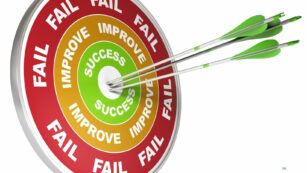Embarking on a self-improvement journey can often feel like standing at the base of a colossal mountain. It’s intimidating and fraught with uncertainties. Integrating natural anti-aging products into your self-care routine can enhance your self-improvement journey by promoting healthier, more youthful skin naturally. One of the main hurdles is simply knowing where to start with functional living space. With a plethora of advice and strategies available, choosing the right path can be overwhelming. This initial confusion contributes significantly to why many hesitate to begin their self-improvement plans.
Which of the Following Choices Best Describes Why it is Difficult to Start a Self Improvement Plan?
 Starting a self-improvement plan presents obstacles chiefly due to psychological barriers and unclear objectives. These elements heavily influence one’s ability to commit and succeed in such endeavors.
Starting a self-improvement plan presents obstacles chiefly due to psychological barriers and unclear objectives. These elements heavily influence one’s ability to commit and succeed in such endeavors.
Resistance to change is rooted in the comfort of familiar routines and fear of the unknown. People often experience anxiety when faced with the prospect of stepping out of their comfort zones. This can manifest as procrastination or outright avoidance, stalling the initiation of self-improvement plans. Additionally, negative self-perception and doubts about one’s abilities can result in low self-efficacy, deterring individuals from taking the initial steps required for change.
Lack of Clear Goals
Without specific, clearly defined goals, initiating a self-improvement plan can feel directionless and overwhelming. Effective goal-setting involves establishing SMART goals—specific, measurable, achievable, relevant, and time-bound objectives. When goals are vague or too ambitious, individuals may struggle to find a starting point or lose motivation due to the perceived enormity of the task. Establishing precise milestones provides structure and a sense of achievement as each is accomplished, motivating continued effort and persistence.
Common Challenges in Starting Self-Improvement
When starting a self-improvement plan, individuals often face significant hurdles that can deter their progress. These challenges range from overwhelming options to actual constraints in their resources and time.
Overwhelming Choices and Information
 Individuals encounter an abundance of resources, methods, and advice when they embark on self-improvement. This wealth of information, although beneficial, often leads to confusion. Making a decision becomes difficult when faced with multiple approaches, each claiming superiority. For instance, someone looking to improve their physical health might find numerous diet plans, workout routines, and supplemental information. Deciding where to begin or which plan suits their unique needs best can become a daunting task. This overload of choices contributes to decision fatigue, which can stall the initiation of any structured improvement plan.
Individuals encounter an abundance of resources, methods, and advice when they embark on self-improvement. This wealth of information, although beneficial, often leads to confusion. Making a decision becomes difficult when faced with multiple approaches, each claiming superiority. For instance, someone looking to improve their physical health might find numerous diet plans, workout routines, and supplemental information. Deciding where to begin or which plan suits their unique needs best can become a daunting task. This overload of choices contributes to decision fatigue, which can stall the initiation of any structured improvement plan.
Time and Resource Constraints
Self-improvement also requires a commitment of time and resources, which can pose significant barriers. Most individuals juggle various responsibilities like work, family, and social obligations, which can limit the time available for personal development activities. Furthermore, some improvement programs, whether they involve hiring coaches, subscribing to platforms, or purchasing materials, entail financial costs. For example, enrolling in a professional development course or buying health and wellness guides can be expensive. These financial and temporal constraints often discourage individuals from taking the first steps in their self-impletion improvement journey, forcing them to prioritize other immediate needs over their long-term personal goals.
Strategies to Overcome Initial Hurdles
 Initiating a self-improvement plan involves navigating through various psychological and practical challenges. This section offers effective strategies designed to help individuals overcome these initial hurdles and set the stage for sustained personal growth.
Initiating a self-improvement plan involves navigating through various psychological and practical challenges. This section offers effective strategies designed to help individuals overcome these initial hurdles and set the stage for sustained personal growth.
Identifying realistic and attainable goals is crucial for steady advancement in self-impression improvement plans. A common pitfall is the setting of overly ambitious objectives that may seem insurmountable. Instead, focusing on smaller, measurable milestones aids in maintaining motivation and avoiding feelings of failure. For instance, if someone’s ultimate goal is to improve their fitness, they might start by committing to short, 15-minute workouts three times a week. This approach not only makes the goal appear more achievable but also allows for gradual adjustments as they progress.
Seeking Guidance and Support
Finding the right guidance and leaning on a support system can dramatically increase the success rate of a self-imodule development journey. Individuals may choose to engage with mentors who have successfully navigated similar paths. Additionally, joining support groups or seeking professional advice can provide not just encouragement but also proven strategies and accountability mechanisms. Moreover, involving friends or family members can enhance emotional support, making the process more enjoyable and less daunting.

